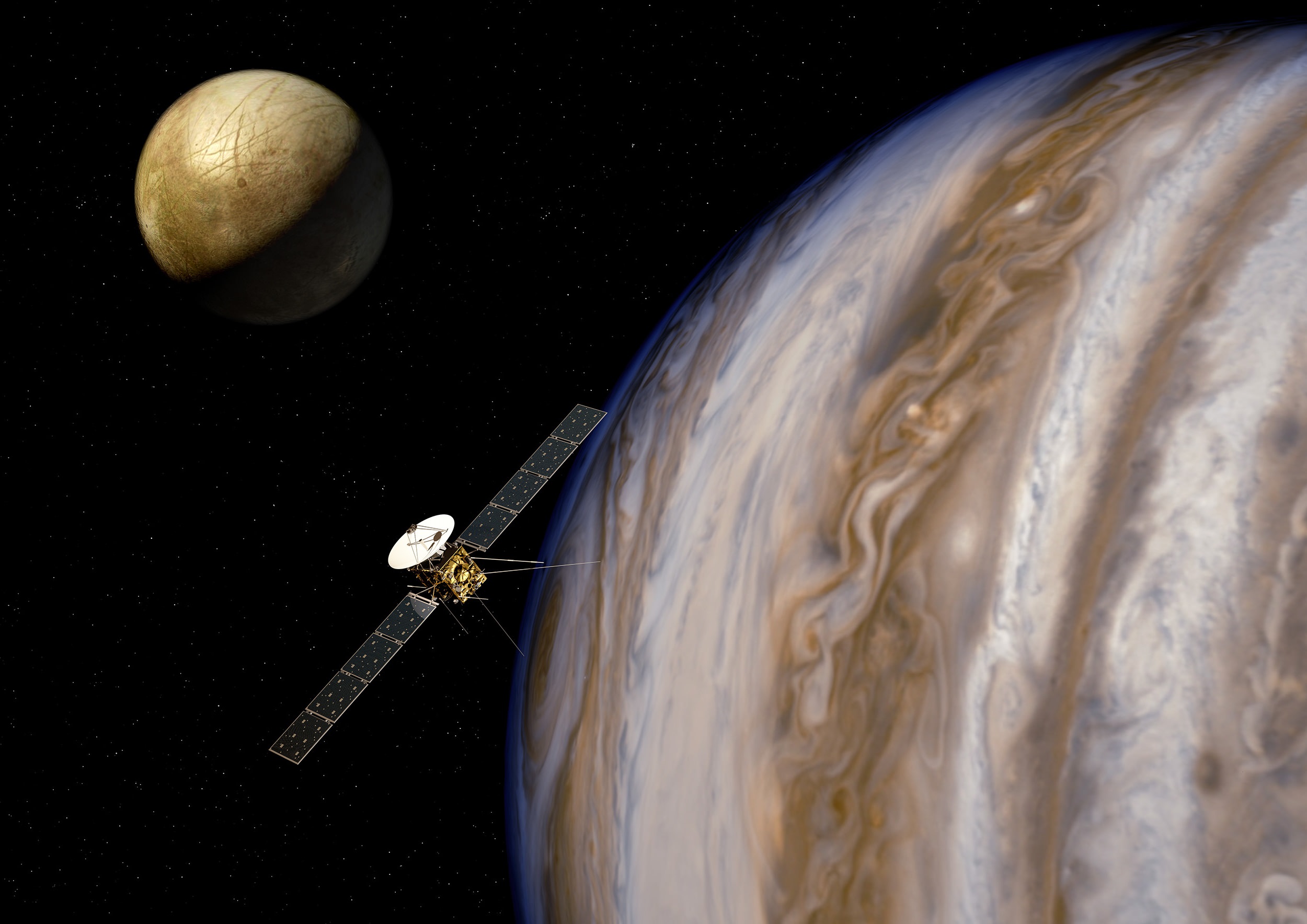Now less than one year until the projected launch date, ESA’s JUICE mission is in the final phases of development. The JUpiter ICy moons Explorer (JUICE) is now fully built with all ten instruments integrated into the spacecraft bus. Next comes all-up testing in a full flight configuration.
Launch is currently scheduled for April of 2023, with the mission slated to conduct detailed investigations of Jupiter and its system of moons, focusing on Europa, Callisto and especially Ganymede.
“This milestone is very important,” said Maneula Baroni, the spacecraft assembly, integration and test engineer. “The spacecraft is ready for the test campaign to verify, finally, that everything works as expected with the performances we are expecting.”
This is the first large-class mission of ESA’s Cosmic Vision program, which has the goal of helping scientists figure out what conditions are best for life – not only in our Solar System, but for our galaxy and the Universe.

Jupiter and its moons are very much like a solar system in itself. By studying the Jupiter system, scientists hopes to learn more about the icy worlds around Jupiter and the origins and possibility of life in our Universe, while gaining insights into how gas giant planets form. This should shed light on how life might emerge in Jupiter-like exoplanetary systems.
After launch, it will take eight years to reach the Jupiter system. The current mission timeline expects the spacecraft to operate for at least three years once there.
The spacecraft will do several fly-bys of Europa and Callisto before going into orbit around Ganymede, to conduct a more in-depth analysis. This will be the first time a spacecraft will orbit an outer Solar System moon.
JUICE will have a suite of ten science instruments which will help map out the surfaces of the three moons, as well as a get a glimpse into their icy interiors and subsurface oceans.
The spacecraft will map out Ganymede’s magnetic field, the only moon in the Solar System known to have one. At Europa, JUICE will search for the chemicals of life, and organic materials that could be on the surface, as well as learn more about its tenuous atmosphere. And JUICE will also be equipped with a radar system that will measure the depth of its subsurface oceans.
“Humanity always poses these questions,” said Baroni. “Are we alone in the Universe? Is there life outside Earth? Are there environments where life can be sustained? This is one of the main objectives for Juice: to search if on the environment, on the ocean worlds of Europa and Ganymede, are there the conditions to sustain life?”
Expect more updates as JUICE prepares for launch. You can read more about the mission’s science objectives here.

